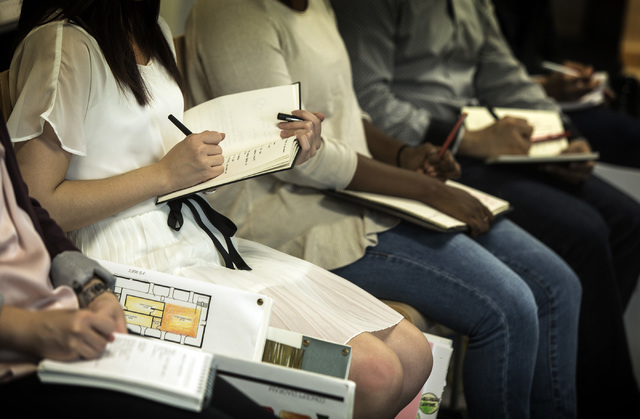CSN wants to let former students know they may have earned associate degrees
For the past week, the College of Southern Nevada has been reaching out to thousands of former students who may have earned an associate degree there without even knowing it.
As a new effort to boost graduation rates and make sure students receive credit for completed coursework, CSN has emailed more than 2,600 people who are pursuing a bachelor’s degree at a four-year college in the state after transferring from CSN. Those who earned 60 or more credits between the two schools may be eligible for a CSN associate degree, which they can get by filling out a short application online.
“It gives them confidence,” said CSN Assistant Vice President Laura Latimer, who is helping oversee the initiative. “That’s the psychological, idealistic side of it. But the pragmatic side is they have something they can put on their resume and use it as an asset. It’s a pay raise. It’s a new job.”
For at least four years the Nevada System of Higher Education has adopted the “reverse transfer” program for colleges statewide. The initiative encourages students who transfer from a community college to a four-year school to obtain an associate degree if they have completed degree requirements between both institutions.
But few students take advantage of the program, so administrators at CSN — the state’s biggest college — are reaching out directly through students’ college-issued email addresses. The school is using an NSHE-compiled list of students who have earned enough credits for an associate degree, but because the list is based only on accumulated credits, CSN must review transcripts individually to ensure the right courses were taken for an associate degree in science, business, art or general studies.
“It enhances their chances for getting a job by having multiple degrees and ensures they have some marketable degree in case they don’t complete (a bachelor’s),” said Jason Geddes, who sits on NSHE’s Board of Regents.
The reverse transfer process is part of a nationwide trend to help so-called “potential completers.” Between 2003 and 2013, 2 million people attended two or more years of college in the United States but didn’t get a degree, said Judith T. Brauer, assistant director for the National Institute for the Study of Transfer Students at the University of North Georgia.
In at least 36 states, there is at least one partnership between a two-year school and a four-year school adopting the effort, according to the institute. Brauer said those partnerships can be challenging because colleges must coordinate carefully to let students know if they’re eligible. Administrators also have to ensure coursework is compatible between the two institutions.
“Two- and four-year institutions were not designed for the variety and complexity of student pathways that we see today,” Brauer said. “This mechanism accounts for this complexity and gives students a tangible reward for their efforts.”
For more information about the CSN program — and to apply — visit www.csn.edu/reversetransfer.
Contact Ana Ley at aley@reviewjournal.com or 702-224-5512. Find her on Twitter @la__ley

















